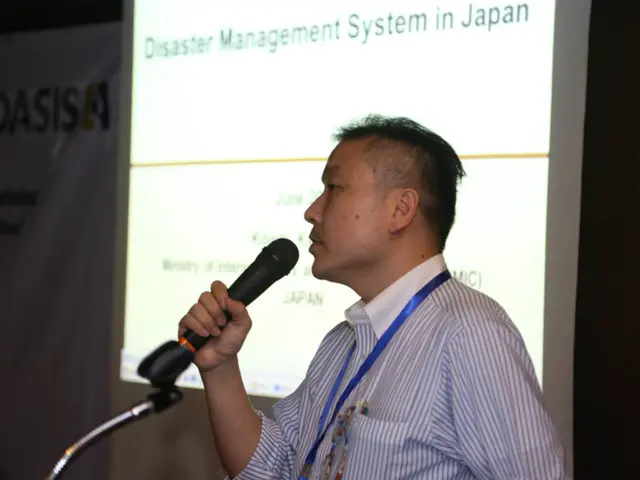Recognizing Signs of a Hacked WordPress Website: Insights and Tips
Identifying a compromised WordPress site is crucial to protect your Online empire from data loss, downtime, and reputational damage. In this guide, we'll walk you through how to spot potential threats and what actions to take to get your site back up and running securely.
The Harsh Reality of Compromised WordPress Sites
A compromised WordPress site can serve as a playground for cybercriminals, affecting your site's integrity and tarnishing your brand image. Here's why you must address issues promptly:
- Suffer Outages: Your site might become unresponsive and inaccessible to users.
- Harm Visitors: Malicious code might infect users' devices; remember, no one wants that bad rep.
- Ruin Your Rep: If hackers use your platform for phishing or spamming, it could significantly harm your reputation.
- Steal Data: Hackers may pilfer sensitive information, login credentials, or financial data.
- Blacklisting: With malware detection, your site risks getting blacklisted, resulting in plummeting rankings and a decrease in traffic.
Now, let's explore the signs of a breach and the methods to identify compromised WordPress sites.
Overt Red Flags: How to Spot a Hacked WordPress Site
1. Mystifying Content Transformations
If something fishy happens to your content-posts, pages, or media files-it may mean your site has been infiltrated. Evildoers may injection malicious links, spammy content, or hidden code into your site.
Be alert for:
- Bizarre posts and pages created without your knowledge.
- Questionable content such as spammy links or misleading web addresses.
- Invisible text or hidden links lurking on your pages.
2. Unwanted Visitors Joining the Party
WordPress grants different user roles with varying permissions. Should you find unfamiliar accounts or accounts with excessive privileges (like admin access), your site may have been hijacked.
Scrutinize:
- Check Users > All Users in your WordPress dashboard.
- Keep an eye out for any unfamiliar user accounts or accounts expecting too much power (i.e., those with admin privileges).
- Rid your site of any suspicious accounts immediately.
3. Staggering Slowness
Unexpected slowness or unresponsiveness can indicate malware lurking on your website, gobbling up server resources.
To test your site speed:
- Employ tools like Google PageSpeed Insights, GTmetrix, or Pingdom to inspect areas for improvement.
- Pinpoint whether performance issues pop up regularly or following specific actions.
4. Automatic Dance Parties: Redirect Gone Wild
If visitors find themselves unintentionally directed to the wrong URL, it likely means your site has fallen victim to attackers. Hackers may exploit redirects to lead visitors towards spammy, phishing, or malicious destinations.
To check for redirects:
- Visit your site using various browsers and devices.
- Use a tool like Screaming Frog to inspect unexpected URLs eager to send your visitors off-course.
5. Google Search Console Sounding Alarms
Google Search Console is a treasured tool for keeping tabs on your website's health. If your site is compromised, Google might send you warnings via email or directly within the Search Console.
You might receive alerts regarding:
- Malware spotted: Google may alert you of poisonous content.
- Security concerns: Google may indicate potential vulnerabilities like hacked content or invasions.
To check for warnings:
- Login to Google Search Console and research any security issues or malware alerts under the Security Issues tab.
6. Unusual Activity Peaks
An unexpected spike in traffic could mean that evildoers are exploiting your platform for malicious purposes, like sending spam emails or performing click fraud, which could drastically alter your site's traffic patterns.
To check unusual traffic:
- Use Google Analytics to monitor traffic patterns.
- Look for abrupt increases in traffic from dubious sources or geographic locations.
7. Hidden Threats: Sinister Files or Code Hiding in Plain Sight
Attackers often conceal malicious code and files within your WordPress site. This can come in the form of deceptive files, scripts, or backdoors that allow them to reinfiltrate your site at a later time.
Indications of hidden threats:
- Mysterious files or folders not part of your collection.
- Files formerly untouched that have experienced modifications.
- Covert scripts invisible in your website's source code.
You can inspect for suspicious files using a file manager on your hosting panel or via FTP client as you browse your site's files. Prioritize these areas:
- and hubs of add-ons and themes.
- – for strange code.
- – watch out for manipulated redirects.
8. Administrator Access Denied: Who's in Charge Here?
If you suddenly can't get into the admin area of your WordPress site, you might have been locked out by attackers who have altered your login credentials or installed malware that restricts your access.
Resolutions:
- Attempt password recovery via the WordPress login page's Forgot Password link.
- If that doesn't work, reset your password using your web host's control panel or phpMyAdmin.
9. Oversharing Mails: Unwanted Mail Correspondence
If your WordPress site starts sending an unusual number of emails, especially those with unfamiliar sender details or subjects, it may have been compromised. This can happen if attackers utilize your site to distribute spam or phishing emails.
Check:
- Maintain an eye on your site's outgoing email activity via email log plugins.
- Check file for any suspicious code.
10. The Big Red Flag: Banned by Search Engines
In case search engines like Google detect malware or shady material on your site, they might penalize your site, causing a substantial drop in traffic.
Assess:
- Use Google's Search Console to determine whether your site has been penalized.
- Investigate whether your site is marked as unsafe on Google's Safe Browsing database.
Rebuilding a Secure WordPress Fortress
If you've identified signs of a compromised WordPress site, tackle the issue promptly with these troubleshooting steps:
Step 1: Back Up Your Site
Before making any major changes, it's imperative to back up your site to safeguard against potential data loss during repairs.
- Install a backup plugin such as UpdraftPlus or BackupBuddy.
- Download both your database and WordPress files.
Step 2: Clean Up Your Act
To remove malware, employ WordPress security plugins like Wordfence or Sucuri, which will scan your site for malicious code and warn you of suspicious activities. These plugins can also help remove any infected files and strengthen your website's protection.
Step 3: Lock things Down: Secure Your Admin Area
Since intruders may have accessed your login credentials, alter your passwords immediately:
- Update your WordPress admin password, as well as other user account passwords.
- Update your hosting account password, FTP credentials, and database password.
Step 4: invest in Quality Locksmithing: Securing Your Site
Once your site is pristine, focus on bolstering its security to deter future attacks:
- Install a security plugin like Wordfence or Sucuri.
- Enable two-factor authentication for admin accounts.
- Keep your themes, plugins, and WordPress core up-to-date.
- Implement regular backups to restore quickly if further misfortune strikes.
Step 5: Cry for Help: Request a Review from Google
If your site was blacklisted by Google, request a review post cleanup. Google will examine your site and, if everything appears clean, eliminate the blacklist warning.
Conclusion
A compromised WordPress site can swiftly cause havoc, resulting in data loss, performance problems, and damage to your reputation. Pinpointing the warning signs early on can help mitigate the impact and get your site back to tip-top shape. Keep tabs on your site and practice strong security practices to prevent such incidents in the first place.
If you suspect foul play, follow the steps outlined in this guide to detect and combat it. Protect your WordPress domain by being vigilant and proactive.
In the realm of cybersecurity and data-and-cloud-computing, a compromised WordPress site can be a playground for cybercriminals, potentially leading to data loss, downtime, and reputational damage. Here are two sentences that show the importance of technology in the context of securing a WordPress site:
- Leveraging modern technology, such as security plugins like Wordfence or Sucuri, can help detect malicious activities and strengthen website protection, thereby preventing potential breaches and data theft.
- Embracing advancements in technology, including automatic backups and two-factor authentication, allows website owners to safeguard their digital empires efficiently, ensuring swift recovery in case of a compromised WordPress site and maintaining a secure online presence.








